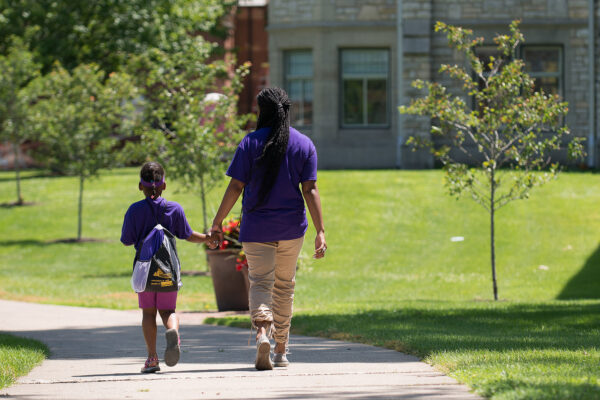By Annelle B. Primm
This post is the latest in a series on college student mental health and well-being.
A black student experiences cyberbullying and racial slurs directed at him on social media over a period of months. Feeling he has no way to effectively respond or handle the problem, it affects his schoolwork, and he begins feeling increasingly distraught, hopeless, and depressed.
An Asian student who does well in school is often viewed by others as being a model minority. Yet these extreme expectations leave her insecure and constantly anxious (experiencing “imposter phenomenon”) but unwilling to seek help.
A Latinx student with protected status under the Obama-era Deferred Action for Childhood Arrivals policy is told by menacing students to “go back where you came from”—she worries about whether she can stay in the United States and feels marginalized and uncertain about whom she can trust; a Muslim student experiencing Islamophobia reports being eyed with suspicion on campus and derided for praying; an American Indian student experiences isolation and stress due to the stark contrast between his home culture and the highly competitive and individualized university environment. The loneliness and distress build without a support network to turn to and begin to affect his academic work and daily life.
These are just a few of the challenges faced by students of color on college campuses across the country. Students of color can experience a variety of difficult situations contributing to experiencing greater psychological distress than white students: being victims of micro-aggressions and racism, Islamophobia, cyberbullying; encountering culture-related extreme expectations; and experiencing isolation and loneliness from the often vast differences between home culture and environment and that of school. Difficulties posed by these circumstances may be worsened when students lack a supportive social network and face barriers to seeking help.
Not all students of color who confront these risks to well-being will experience emotional distress. Protective factors can limit the impact—thus the adage: risk factors are not predictive factors because of protective factors. For example, social support, cultural pride, the sense of belonging that comes from interacting with others with a similar cultural background, and resources on campus designed to assist students of color to adapt to the campus environment can make a positive difference in their adjustment and emotional well-being.
The United States is becoming more diverse, and the higher education setting is no exception, with approximately 40 percent of college and university students identifying themselves as black, Latinx, Asian, Native American, and mixed race. In contrast, less than 25 percent of faculty members are people of color. This has created a dearth of faculty role models and lack of faculty familiar with the psychosocial challenges students of color encounter.
College students of color face a unique situation in the vortex of transitional age and a racially polarized society where negative stereotypes of people of color are common. The traditional age of college attendance, 18 to 24 years, is not only a time of change and stress as they transition into adulthood—it also is a period when many mental illnesses first appear. It should be noted that college students of color have similar rates of mental illnesses, like depression and anxiety, compared to their white peers.
But a recent national survey found that compared to white students, students of color report higher rates of emotional distress in their freshman year and of keeping their difficulties to themselves. Stigma, reluctance to seek help for mental health needs, and cultural mistrust of mental health professionals among students of color are barriers that often lead them to suffer in silence. In fact, a disparity in seeking counseling services exists between students of color and white students—students of color are half as likely as their white counterparts to seek help.
The Steve Fund has focused its efforts on reducing the risks that students of color face and removing the barriers to seeking help, before, during, and after college. In partnership with the JED Foundation, the Steve Fund has established an Equity in Mental Health Framework with a set of recommendations to support the mental health of college students of color, such as increasing diversity of faculty and staff, making resources that support the mental health of students of color available and publicizing them, and gathering data to increase understanding about how to meet students’ mental health needs.
In the past few years, a number of organizations and universities have developed programs and resources that focus on the mental health and emotional well-being of the student of color population. Examples of programs, some of which are in partnership with the Steve Fund, include:
- Crisis Text Line—nationwide crisis counselor support via text
- Kognito—educating students and faculty about mental health and suicide prevention
- 7 Cups—providing direct emotional support to students
- Project RISE—a peer counseling service at the University of Virginia
- YB Men—a social media-based educational and social support program for young black men
- Native American Cultural Center at Stanford University (CA)—supporting the Native American student community
A few key points to keep in mind and suggestions for how to support the mental health and well-being of students of color:
Silence = stigma. Help ensure that mental health is brought out of the shadows. Create forums in which mental health can be discussed openly among students, faculty, and staff. Kaiser Permanente’s Find Your Words campaign and StoryCorps are two examples that are helping the public, including young people, talk about mental health.
Knowledge is power. Help educate faculty, staff, students, and others about mental health, such as through the Mental Health First Aid training program. Have a trainer who can tailor the training to the culture of the audience.
One size does not fit all. Programs, services, and resources may need tailoring to meet the needs of different cultural, racial, or religious groups.
Treatment works. Many types of mental health services, including various types of psychotherapy and medication and other approaches can help treat and manage mental illness and psychological distress.
Self-care. Mental health concerns or psychological distress may not require psychiatric care or psychotherapy. There are many things that students can do for themselves to support their mental health and well-being through self-care strategies, such as exercise, healthy eating, supportive friendships, relaxation, yoga, mindfulness, and more. Psychologist Howard Stevenson suggests that when confronting micro-aggressions and racial insults, learning how to respond with a comeback on the spot is a great way to help prevent hurtful encounters from festering in the mind and triggering a lingering sense of victimhood.
Care for the caregivers. Seek out opportunities to equip families with knowledge about mental health and culturally sensitive resources available on campus for students of color.
Culture counts. Recruit and retain faculty, staff, and mental health providers of color if possible; at a minimum, provide cultural competence education and training.
Nothing about us without us. Involve students of color on an ongoing basis in developing programs and resources for them. Utilize trained peer supporters because students often are more receptive to suggestions to seek help from their peers.
Use technology. Take advantage of available technology to help increase access for young people of color. (Examples include Crisis Text Line, Kognito, 7 Cups, and YB Men.)
And possibly most importantly, keep in mind the adage risk factors are not predictive factors because of protective factors. The existence of risk factors does not singularly determine an individual’s path or outcome. Proactive policies and procedures that support the mental health and emotional well-being of students of color and counteract negative forces that alienate and marginalize them can make a difference in the lives of many students.
If you have any questions or comments about this blog post, please contact us.


